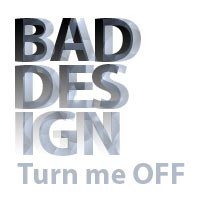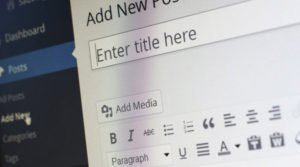Should a new blogger get a custom design for his blog?

There are some things that people take for granted without questioning them. Call them sacred cows, if you like. But we learn and grow from questioning, and when you have a bit of a rebel streak in you, as I do, you are likely to ask blasphemous questions. For instance, “Does a new blogger really need a custom design for his blog?”
Just quickly, so that we are all on the same page, by “custom design”, I mean any design aspect beyond simply uploading images into a predefined space in a template.
The fact is that there are pros and cons to everything, and I am a big believer in branding and in being unique:
- Unique in what you say.
- Unique in how you say it.
- Unique in how you show it.
So to take a blog design off the shelf, dust it off, pop in a couple original images and just run with it is hardly my natural inclination. Yes, I am pro custom design. And if you look at “The steps to launch a successful blog” in the First Site Guide, “Customize and design the blog” is one of the seven steps.
However, I wondered if there might be good reasons for a new blogger to use an off-the-shelf designrather than a custom design. That’s my rebel streak!
One obvious reason is money. Although design doesn’t necessarily have to cost all that much, many newbie bloggers are on a bootstrappingly tight budget. Just look around at how many articles and ads assure people that they can make money online without investing a penny. Unless you are lucky, you won’t find a designer who understands SEO, conversions and marketing goals, and might need to hire some consultants, adding even more money to your start-up budget.
One option, explored by Kevin Muldoon, is to purchase a premium theme with built-in SEO and conversion factors, typically for less than $100:
“One of the main reasons for purchasing a custom design for a blog is to distinguish your website from the competition. Today, this is less of an issue. Users of Tumblr have hundreds of premium templates available to them whilst WordPress users can choose from thousands. As such, there is less chance that another blog within your niche will use the same template (unless they copy you!).”
Of course, this ignores that if you are serious about blogging and building a business around your blog, you will still need a lot of custom design to tweak, upgrade and customize that premium theme.
Saving money in the short term might be necessary, but in the long term you don’t want to forgo the obvious benefits of a custom design. This is how Bianca Rothschild, a Sydney web designer, puts it:
“A custom design for your blog tells visitors immediately who you are. It tells them you are serious, and you will be taken seriously. With a generic design, nobody will take you seriously.”
I think of custom design, as I think most professionals in marketing do, as an investment rather than a cost. It is considered an ante to be in the game, without which you just won’t make any money.
Gail Gardner, a renowned small business marketing strategist, illustrates nicely why anybody serious about their blog should have a plan in place when they start:
“Blogs can be very complex and run many plugins, so find a mentor BEFORE you have a site designed. The Internet is littered with beautiful sites no one ever sees that would not convert even if you paid to send traffic to them.”
But there is more to it than that. I spoke with Chicago web developer Joshua Alexander, who has developed his share of custom designs. He points out:
“Every website can benefit from a custom design, but not every blogger should start out that way from Day One. There are several things to consider.”
In addition to the cost, he identified the time to get started and the need to ensure the code is right and remains right.
In other words, if you want to start blogging today, you can start with out-of-the-box themes within an hour. Even one of the default WordPress themes will do to start. Over time you can slowly improve the physical structure of the blog and build your social media presence, even as you continue blogging and start saving up some money for a custom design and other goodies.. You don’t have to have everything in place to start.
As for ensuring that the code remains right, until you start building an audience and have some funds, you don’t want to have to worry about maintaining that custom code.
None of this is a put-down of custom design for your blog, which I maintain is critical for success, but it does mean that More important is a custom domain. The design can be changed along the way, but the domain is harder to change without losing valuable inbound links and social mentions.
There is another reason why somebody might want to hold off on a custom design for a while, and that is if one has not yet decided on strategy. For instance, you might have a topic in mind to blog about, but you might not yet have figured out the angle or approach. Sometimes it takes blogging a while before you find your voice, figure out your angle or narrow down your niche.
- Your voice might dictate the look of your blog. A snappy, sarcastic voice calls for a completely different look than a serious, official-sounding voice.
- Your angle might make a big difference in the functionality of the blog, and therefore how it is designed for optimum user experience.
- Your niche can make a big difference in design; you won’t want the same design for a blog on healthcare inventory as on healthcare recruiting.
Until you have narrowed down some of these factors, it might be a smart strategy to just run with a public-domain template. It is far easier to create a custom design later, than to replace a custom design later.
When (or if) you jump in to get a custom design, you might want to think twice about starting from scratch. As Anil Ramsey of Planet Asia, which is a WordPress site, using the X Theme with some stylistic modifications, pointed out to my in a recent discussion:
“Custom themes usually come with hard-coded layout options. A year down the line, if the designer has disappeared, the site owner is stuck, unable to modify his design over time. WordPress updates often, while custom themes generally don’t. General WordPress users likely don’t know how to manually update template code.”
In other words, it is worth building a custom design on a WordPress foundation, in order to benefit from best-practice updates, but it is important to build customizations in a way that they won’t need to be updated every time WordPress updates.
If you look at my blog “Always Write“, it was custom-built…sort of. In fact, the whole site was. It is a WordPress site built on the Genesis Framework, but it has had considerable custom work, including the lead-generation form (which floats on non-blog pages) and the “social proof” footer block. But I did not start out with anything so fancy. I do recommend a custom design, but do it when you are ready. It’s OK to walk out from the starting gates and start running later on.
When you do start looking at custom design, what should be your first priority? “At a minimum, a site needs a mobile responsive design that puts the most important offers and navigation exactly where you want it to appear for mobile users,” says Gail Gardner.
 Does Your Site Design Turn Off Visitors
Does Your Site Design Turn Off Visitors Is a Custom Design Essential to Your Blog’s Success?
Is a Custom Design Essential to Your Blog’s Success? 10 Techniques how to Start a Blog Post to Engage Readers to Stay on Page
10 Techniques how to Start a Blog Post to Engage Readers to Stay on Page 14 Tips To Help You In Marketing Your WordPress Site
14 Tips To Help You In Marketing Your WordPress Site
{ 19 Responses }